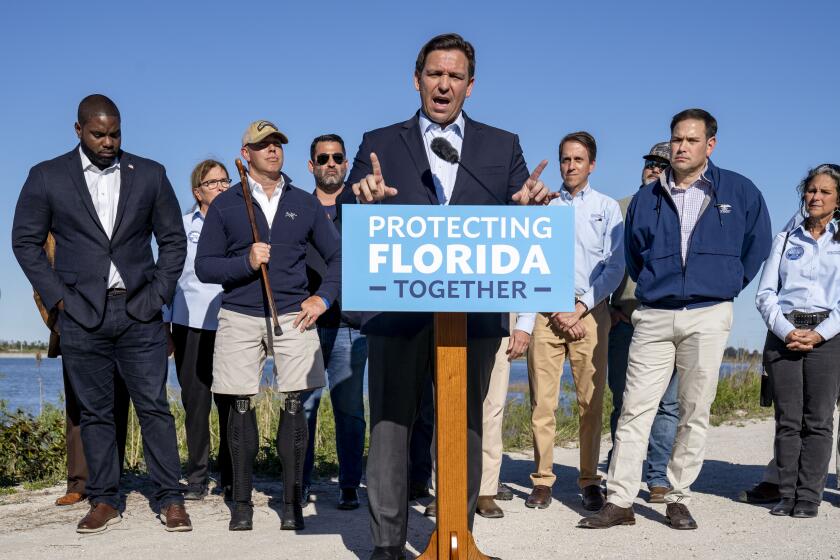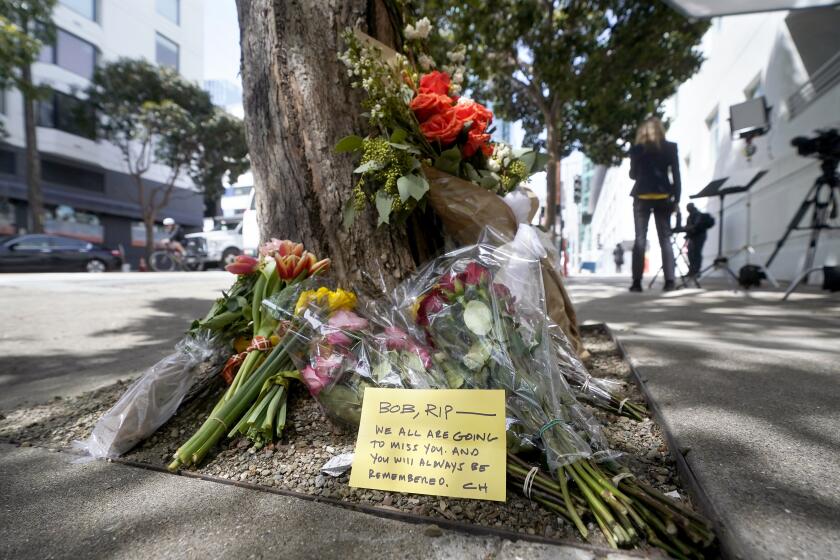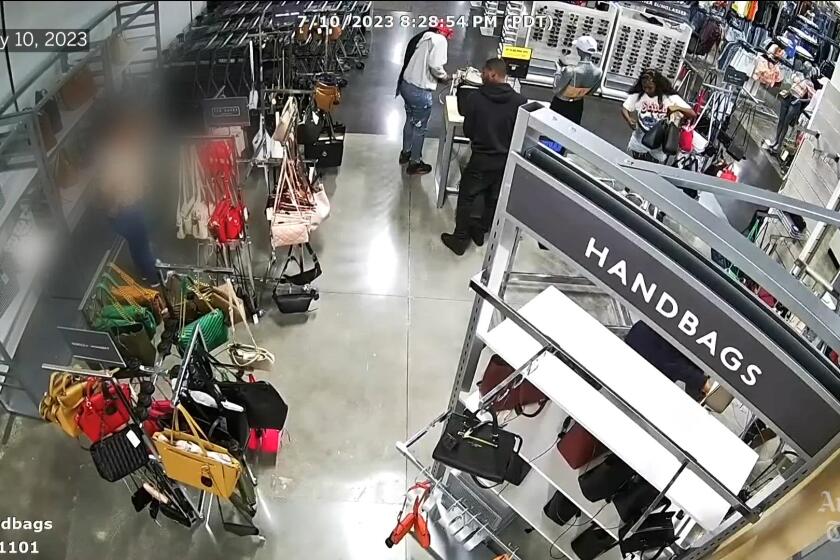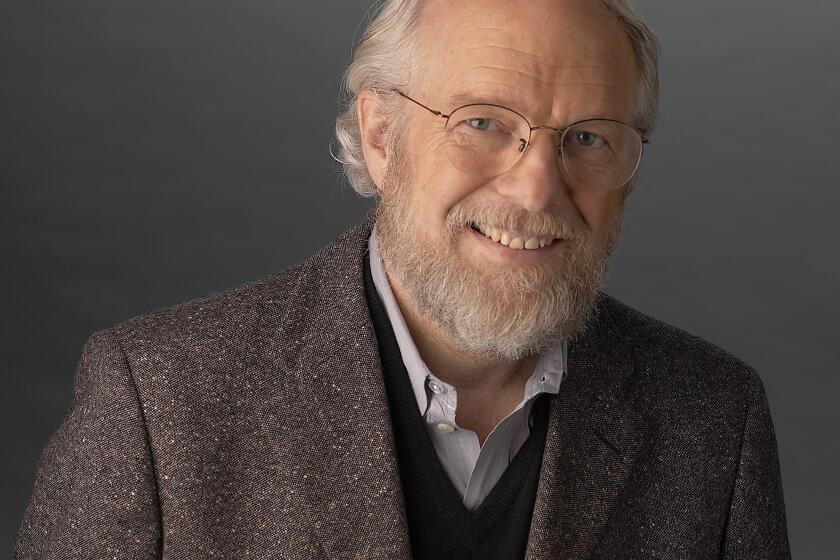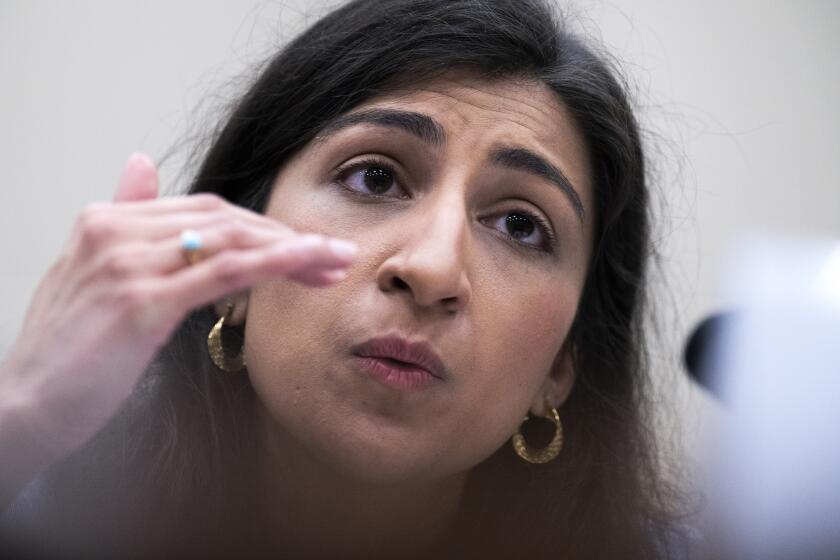Column: They say San Francisco is coming back as a tech hub, but it never really left
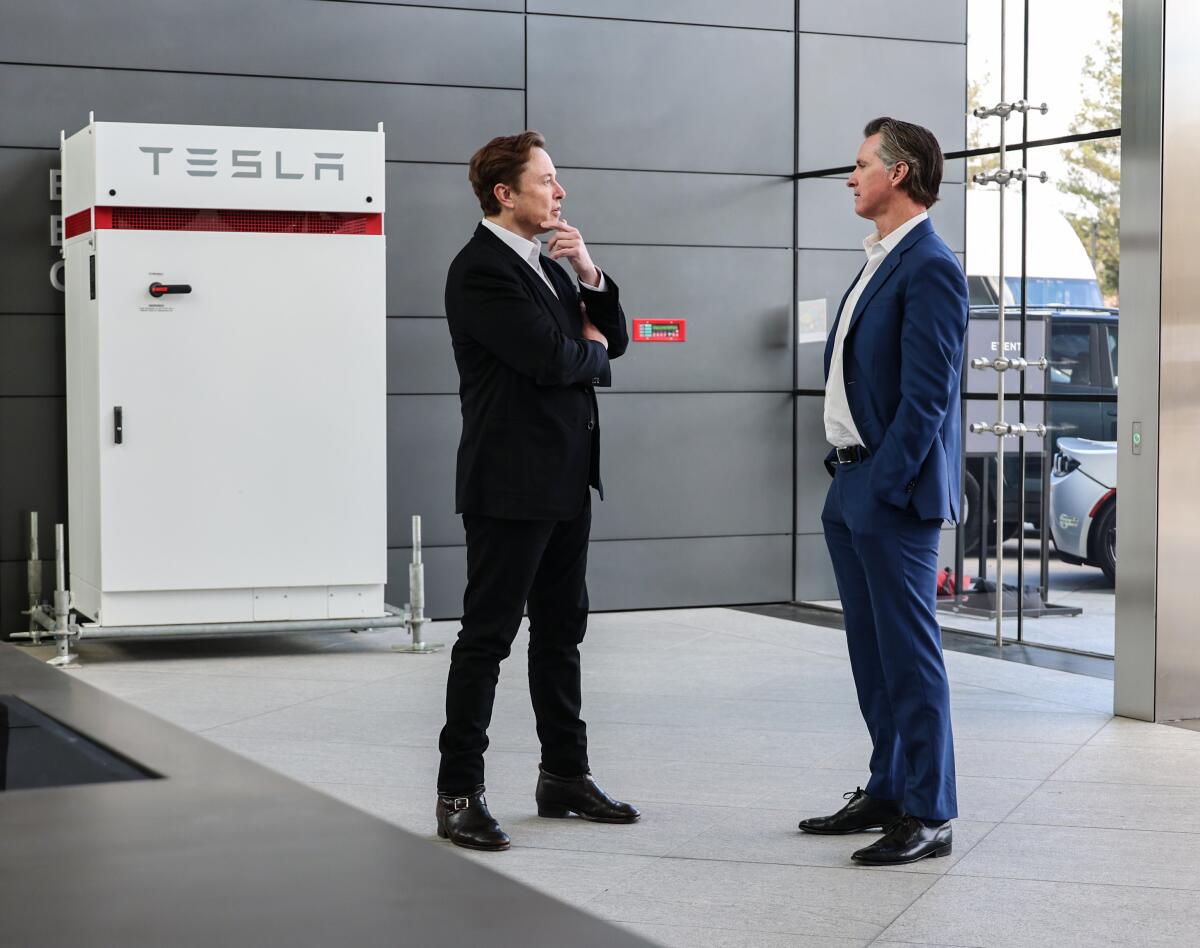
Michael Suswal’s first eye-opening encounter with the vibrancy of San Francisco came in 2017.
That’s when he and his fellow co-founders of Standard AI, an artificial intelligence startup funded by the incubator Y Combinator, moved from New York to San Francisco for the summer.
“Initially we planned on going back to New York,” says Suswal, 44. “But after living in the Bay Area for two or three months, between us we had way more network contacts than we had had in our combined 50 years living in New York.”
Where else would you go that would have more support, more connections, the right type of environment and the right investors?
— Michael Suswal, Generation Lab
When COVID hit, Suswal told me, he moved to Seattle and worked from home. Last year, when he and a partner opted to co-found a new company, they pondered the best place to start.
“We thought, where else would you go that would have more support, more connections, the right type of environment and the right investors? Building a company is hard. It takes everything you’ve got, and even then there’s an 80% chance of failure. So why would you stack the deck against yourself? It was a no-brainer to come back here.”
Get the latest from Michael Hiltzik
Commentary on economics and more from a Pulitzer Prize winner.
You may occasionally receive promotional content from the Los Angeles Times.
Generation Lab, which Suswal co-founded with longevity expert Alina Su and UC Berkeley bioengineering professor Irina Conboy, aims to market a technology that can help customers identify and manage long-term medical conditions.
Suswal’s take is different from what you might have heard from the news media and red-state politicians over the last few years. They spin a narrative of a region — indeed, the entire state of California — in secular decline. Of a Silicon Valley whose best days are behind it. Of wholesale flight of money and talent to new, welcoming places such as Miami and Austin.
But there has never been much truth to that narrative generally, and it’s more dubious than ever today, when the Bay Area has emerged as a center of artificial intelligence investing.
There is no shortage of newsy nuggets to illustrate the “doom loop” narrative about San Francisco.
Contrary to predictions and expectations, tech companies aren’t fleeing California.
On Tuesday, for instance, Macy’s announced that it would close its gigantic store overlooking Union Square sometime in the next three years. But the closure is part of a major corporate retrenchment involving the closings of 150 stores nationwide, 30% of the total.
Nor is there anything historically new about San Francisco-bashing. The practice dates back to the Gold Rush, when the city’s powerful attraction as a jumping-off place for Forty-Niners seeking their fortunes in the nearby hills generated an equally potent counter-narrative.
Hinton R. Helper, a visitor from North Carolina who would eventually gain notoriety as a white supremacist, reported in 1855 on the city’s “rottenness and its corruption, its squalor and its misery, its crime and its shame, its gold and its dross.... Degradation, profligacy and vice confront us at every step.”
It’s a short distance from Helper’s screed to the map that Florida Gov. Ron DeSantis displayed during a televised debate with Gov. Gavin Newsom in November, purportedly showing deposits of human waste around San Francisco. (That didn’t help DeSantis’ presidential campaign avert an early demise, any more than Helper’s critique stemmed the flow of fortune-seekers into California.)
It’s true that the frenzy in artificial intelligence investing has brought a jolt of capital to the entrepreneurial economy of the Bay Area, but that’s merely the latest iteration of a story that dates back to the emergence of Silicon Valley in the late 1960s — or even to the founding of Hewlett-Packard in Palo Alto in 1939.
The region has undergone a long sequence of technology booms and busts over the decades, but each bust has set the stage for the next boom. In the 1980s, the valley’s chipmakers lost their dominance in semiconductor memory to Japanese competitors.
But within a few years, as UC Berkeley economist and political scientist AnnaLee Saxenian observed in her definitive study of the region, “Regional Advantage,” in 1994, new semiconductor and computer startups such as Sun Microsystems had emerged and Silicon Valley had “regained its former vitality.” By 1990, Silicon Valley was home to “one-third of the 100 largest technology companies created in the United States since 1965,” Saxenian wrote.
Pundits viewed the Bob Lee killing as proof of a surge in street crime in San Francisco. They were wrong, but the errors didn’t stop there.
The key to its enduring stature atop the innovation economy has been the Bay Area’s infrastructure of institutions (Stanford and UC Berkeley) and legal, technical and financial professionals, and its population of technology workers — all having created “dense social networks and open labor markets.”
By contrast, the Silicon wannabes tend to put all their eggs in one basket, and when that basket’s contents spill out, there’s little to fill it up again.
Miami is a telling example. Its mayor, Francis X. Suarez, tried to establish the city as the center of cryptocurrency financing and innovation. The FTX crypto exchange bought naming rights to the arena where the NBA’s Miami Heat play. International conferences for bitcoin and crypto adherents filled the conference center in 2022.
Miami associated itself with the first “city coin,” a crypto token that Suarez claimed would help boost the municipal budget.
The effort hasn’t panned out. FTX collapsed as its founder, Sam Bankman-Fried, was indicted and subsequently convicted of fraud; the Heat’s arena now carries the name of Kaseya, a Miami software firm.
Attendance at crypto conferences has dwindled. MiamiCoin, which was valued at 5 cents when it came on the market in August 2021, now trades for about 16-thousandths of a cent, if anyone cares — there doesn’t seem to have been a trade in eight months. The city is searching for relevance in the modern technology landscape.
The same sources that talked up the flight of entrepreneurs from the Bay Area to Miami, Austin and other Silicon wannabes are now running articles about startup founders moving back; often the return is accompanied by complaints about the lack of a true innovation culture in their new homes, as well as traffic congestion and housing prices soaring out of reach — much the same as one would find in any large city.
As my colleague Hannah Wiley reported recently, San Francisco’s adherents are trying to seize the narrative reins by reminding people that the city and region offer unique advantages to entrepreneurs, especially in technology-related fields.
Politicians and the press bought into the panic over organized shoplifting, but the source of the alarming statistic now admits that it was a lie.
One is Angela Hoover, 25, who launched her consumer-oriented AI search firm, Andi, in Miami with backing from Y Combinator. At first, Miami seemed inviting because it seemed to be host to a healthy startup community.
Attending AI events in San Francisco, however, made it “abundantly clear that the AI community was in San Francisco. It almost feels like you have a front-row seat to a play, and at the same time you’re in the play,” Hoover said.
“Despite what all the doom-and-gloom critics say, [the Bay Area] is still a hotbed of innovation,” Ali Diab, chief executive of Collective Health, told me. That’s what prompted the firm, which manages employer health plans, to return its headquarters to downtown San Francisco after allowing its workforce to disperse to a work-from-home system during the pandemic.
“Obviously, you have the AI revolution being driven from here,” Diab says, “but you also have powerhouse enterprise software companies like Salesforce and Slack.”
Collective Health also discovered that the cost of office space in San Francisco was lower than elsewhere in the Bay Area, including Silicon Valley proper. About 120 of Collective Health’s 783 employees work in San Francisco, with the others distributed among offices in Chicago, Texas and Utah, or working remotely.
Column: Farewell to John Warnock, an internet pioneer whose invention actually made the world better
John Warnock wrote one of the shortest PhD dissertations in history, then changed the world of publishing and printing as co-founder of Adobe.
Diab was an early critic of the “doom loop” argument against San Francisco, observing in a mid-October op-ed in the San Francisco Chronicle that “as a Bay Area native, I’ve had to listen to people predict the demise of my city for my entire life.” In truth, he wrote, “the oft-cited challenges San Francisco faces are no different from those experienced by any other major city in the United States.”
Housing is “prohibitively expensive in almost every major American city,” he added. “New York, Chicago and Los Angeles haven’t solved their homelessness problems and neither have many other large cities.”
The story of a Bay Area exodus always was overstated. The image of Texas’ attraction for entrepreneurs has never moved much beyond three major tech companies that moved their headquarters there from California — Hewlett Packard Enterprise in Houston and Oracle and Tesla in Austin.
And the significance of these moves may be more imagined than real. In 2020, when Oracle announced its move to Austin from Redwood City, south of San Francisco, it said it was building a campus for 10,000 employees; the company has 164,000 workers worldwide.
When Elon Musk sought a location for Tesla’s “global engineering headquarters,” the seat of the company’s innovative brainpower, he found it in Hewlett Packard’s former corporate headquarters — not in Austin, but Palo Alto. He announced his decision to move into that space in February 2023 at a joint event with Gov. Newsom.
Other states have never come close to California in the volume of their venture investments. In 2022, according to the National Venture Capital Assn., California firms raised $78.3 billion in venture funding, more than 40% higher than second-ranked New York. Florida ranked fifth with only $2.6 billion, followed by Texas with $2.4 billion (and Texas’ total fell by about half from the previous year).
San Francisco companies attracted nearly $31 billion in venture funding in 2022, according to CBRE. The Bay Area all told attracted $61 billion, accounting for 35% of all venture funding in the U.S.
Venture investing fell appreciably in 2023, and venture-backed companies experienced a spike in “down rounds” — in which their valuations are lower than they were in the previous round of venture infusions — starting in late 2022. But those trends appeared across the entire venture funding universe, and were more likely related to the run-up in interest rates and fears of a recession than to any California-centric phenomena.
In any case, AI was a distinct bright spot, accounting for about 1 in 5 of all venture deals in 2023 and one-third of all venture dollars invested, according to the accounting firm EisnerAmper.
No one doubts that San Francisco and the Bay Area present challenges. Suswal says he was concerned that recruiting staffers to come to the area would be difficult. When he himself was considering moving back to San Francisco from Seattle last October, he “bought into a lot of the negative aspects of the city that were being published at the time,” he says. “But the city is in better shape than it gets credit for. ... All the best people come here, because it’s well worth it.”
More to Read
Get the latest from Michael Hiltzik
Commentary on economics and more from a Pulitzer Prize winner.
You may occasionally receive promotional content from the Los Angeles Times.
